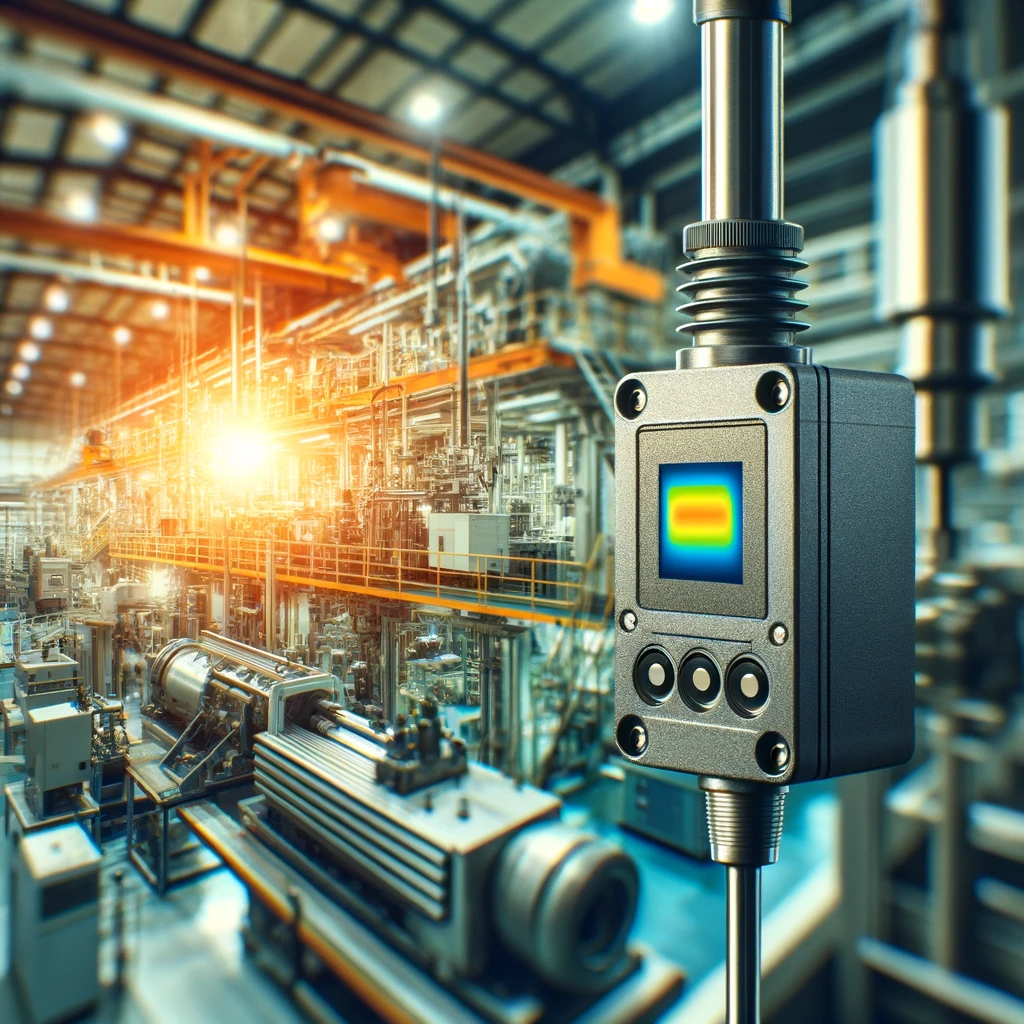
I’ve got a secret to share: sensors are revolutionizing healthcare, extending far beyond the confines of the hospital walls. Brace yourself for a mind-blowing journey through wearable devices, remote monitoring systems, continuous vital sign monitoring, telemedicine, smart home technology, early detection and prevention, personalized medicine, and data security.
In this article, we’ll explore how these sensors are transforming the way we monitor, diagnose, and treat patients, all while ensuring their privacy and safety. Get ready to be amazed by the power of sensors in healthcare!
Wearable Devices: Monitoring Health Anywhere
I rely on my smartwatch to monitor my health anytime and anywhere. Wearable technology has revolutionized the way we approach healthcare, allowing for remote monitoring and access to vital health information.
These devices are equipped with sensors that can track various health parameters such as heart rate, sleep patterns, and even blood oxygen levels. The data collected by these sensors can be seamlessly transmitted to healthcare providers, enabling remote healthcare services and real-time monitoring. This has significant implications for individuals who may not have easy access to healthcare facilities or who require continuous monitoring due to chronic conditions.
Wearable devices provide a convenient and efficient means of staying connected to our health, empowering individuals to take control of their well-being beyond the confines of a hospital or clinic.
Remote Monitoring Systems: Bridging the Gap
One key aspect of remote monitoring systems is their ability to bridge the gap between healthcare providers and patients. These systems utilize telehealth innovations to allow healthcare professionals to remotely monitor and manage patients’ health conditions outside of traditional healthcare settings. Here are some key points about remote monitoring systems:
- Real-time data collection: Remote monitoring systems gather and transmit vital health data from patients, such as heart rate, blood pressure, and glucose levels, in real time.
- Improved patient outcomes: By continuously monitoring patients’ health conditions, healthcare providers can detect and address potential health issues early, leading to better patient outcomes.
- Enhanced patient engagement: Remote monitoring systems empower patients to actively participate in their healthcare by providing them with real-time information about their health and enabling them to make informed decisions.
- Cost-effective healthcare delivery: Remote monitoring systems reduce the need for frequent hospital visits, leading to cost savings for both patients and healthcare providers.
- Accessible healthcare: These systems bring healthcare services to patients’ homes, making healthcare more accessible to individuals who may have limited mobility or live in remote areas.
Continuous Vital Sign Monitoring: Enhancing Patient Safety
The continuous vital sign monitoring system enhances patient safety by providing real-time data on their health status. This system utilizes sensors to continuously monitor vital signs such as heart rate, blood pressure, respiratory rate, and temperature. By collecting and analyzing this data, healthcare professionals can quickly identify any abnormalities or changes in a patient’s condition.
This allows for early intervention and timely medical treatment, ultimately reducing the risk of complications and improving patient outcomes. Continuous vital sign monitoring is especially beneficial for patients with chronic conditions such as diabetes, as it enables continuous glucose monitoring and remote patient management.
Through this technology, healthcare providers can remotely monitor glucose levels and make necessary adjustments to medication or lifestyle recommendations, ensuring optimal diabetic management and reducing the risk of complications.
Telemedicine: Connecting Patients and Healthcare Providers
Telemedicine is revolutionizing the way patients and healthcare providers connect by utilizing remote patient monitoring and virtual doctor consultations. With remote patient monitoring, sensors can continuously collect vital sign data and transmit it to healthcare professionals, allowing for real-time monitoring and early detection of any potential health issues.
Virtual doctor consultations enable patients to consult with healthcare providers from the comfort of their own homes, improving access to care, especially for those in remote areas or with limited mobility. Telemedicine is transforming healthcare delivery by bridging the gap between patients and healthcare providers, enhancing convenience, and improving patient outcomes.
Remote Patient Monitoring
As a healthcare provider, I am able to connect with and monitor my patients remotely through telemedicine, using sensors to gather vital data. This technology has revolutionized the way healthcare is delivered, allowing me to provide timely and efficient care to patients regardless of their location. Here are some key benefits of remote patient monitoring:
- Improved patient outcomes: With wearable technology, I can continuously monitor patients’ vital signs, such as heart rate, blood pressure, and oxygen levels, allowing for early detection of any abnormalities or changes in their health status.
- Enhanced patient convenience: Remote monitoring eliminates the need for frequent hospital visits, enabling patients to stay in the comfort of their own homes while still receiving high-quality care.
- Cost-effective healthcare: By avoiding hospital readmissions and unnecessary visits, remote patient monitoring reduces healthcare costs for both patients and providers.
- Remote diagnostics: Through telemedicine, I can remotely diagnose and treat patients, reducing wait times and improving access to healthcare, particularly for those in rural or underserved areas.
- Personalized care: With the data collected from sensors, I can tailor treatment plans and interventions to each patient’s specific needs, resulting in more personalized and effective care.
Virtual Doctor Consultations
During virtual doctor consultations, I can connect with patients remotely and provide personalized care using sensors and telemedicine technology. Virtual consultations have become an essential component of healthcare, allowing patients to receive medical advice and treatment without the need for in-person visits.
Telehealth solutions enable healthcare providers to remotely monitor patients’ vital signs and symptoms, ensuring timely intervention and proactive care. Through the use of sensors, patients can measure their health parameters, such as blood pressure, heart rate, and glucose levels, and transmit the data securely to their healthcare providers.
This allows for real-time monitoring and adjustment of treatment plans, leading to better patient outcomes. Virtual doctor consultations also offer convenience and accessibility, particularly for patients in remote areas or with limited mobility.
By harnessing the power of technology, virtual consultations are revolutionizing healthcare delivery, improving patient engagement, and enhancing overall healthcare outcomes.
Improved Access to Care
One key benefit of improved access to care is the ability to connect with patients remotely and provide personalized care using sensors and telemedicine technology. This advancement in healthcare has the potential to greatly improve healthcare outcomes and enhance remote patient management. Here are some key points to consider:
- Convenience: Patients can now receive care from the comfort of their homes, eliminating the need for unnecessary travel and reducing waiting times.
- Timely interventions: With remote monitoring, healthcare providers can detect early warning signs of health issues and intervene promptly, leading to better outcomes.
- Cost-effective: Telemedicine reduces healthcare costs by minimizing hospital visits and preventing unnecessary hospital admissions.
- Accessibility: Patients in rural or underserved areas can now access specialized care and consultations without the need for long-distance travel.
- Patient empowerment: By enabling remote patient management, individuals can actively participate in their care, leading to improved health outcomes.
Smart Home Technology: Creating a Health-Conscious Environment
Smart home technology is revolutionizing the way we live, and it is also making a significant impact on our health. With the help of sensor-enabled home monitoring systems, individuals can have their health conditions monitored and tracked from the comfort of their own homes.
This technology not only provides convenience, but it also has numerous health benefits, such as early detection of health issues and the ability to automate tasks that promote a healthier lifestyle. However, it is crucial to address concerns regarding privacy and data security to ensure the widespread adoption of smart home technology in healthcare.
Sensor-Enabled Home Monitoring
In my experience, using sensor-enabled home monitoring has revolutionized the way I create a health-conscious environment. With wearable sensors and advanced technology, I can monitor my health and well-being right from the comfort of my own home. Here are some key benefits of sensor-enabled home monitoring:
- Continuous health monitoring: Sensors provide real-time data on vital signs, allowing for early detection of health issues.
- Remote patient monitoring: Healthcare professionals can monitor patients remotely, reducing the need for frequent hospital visits.
- Medication management: Sensors can remind patients to take medication and track their adherence.
- Fall detection and prevention: Sensors can detect falls and alert caregivers, helping to prevent injuries.
- Improved quality of life: By monitoring health at home, individuals can have greater independence and peace of mind.
These advancements in home healthcare are transforming the way individuals manage their health, promoting early intervention and improved outcomes.
Health Benefits of Automation
Using sensor-enabled home monitoring has significantly improved my health and well-being by integrating automation technology into my daily life. The health benefits of automation are extensive, with improved efficiency being a key advantage.
Through the use of automated systems, tasks that were once time-consuming and labor-intensive can now be completed with ease. For example, automated reminders for medication intake ensure that I never miss a dose, leading to better adherence to my treatment plan. Additionally, automation has greatly enhanced the efficiency of managing my health data.
With sensors collecting and transmitting information in real-time, healthcare professionals can access accurate and up-to-date data, allowing for more informed decision-making and personalized care. Overall, the integration of automation technology into my home has undoubtedly improved the efficiency and effectiveness of my healthcare management.
Privacy and Data Security
The integration of sensor-enabled home monitoring has significantly improved my health and well-being, especially when it comes to privacy and data security in creating a health-conscious environment. With the advancements in technology, there are measures in place to ensure that sensitive health data is protected. Here are some key aspects of privacy and data security in smart home technology:
- Data encryption: Health data collected by sensors is encrypted, making it unreadable to unauthorized individuals.
- Secure data transmission: The data collected is transmitted securely, using protocols that protect against interception or tampering.
- User authentication: Access to health data is restricted to authorized individuals, preventing unauthorized access.
- Consent management: Users have control over how their health data is used and shared, ensuring their privacy preferences are respected.
- Compliance with regulations: Smart home technology providers adhere to privacy and data security regulations to protect user information.
Early Detection and Prevention: Paving the Way for Timely Interventions
With sensors, I can detect and prevent potential health issues before they escalate, enabling timely interventions. Wearable devices and remote monitoring systems equipped with sensors play a crucial role in the early detection and prevention of various health conditions.
These devices continuously monitor vital signs and collect data on a person’s physical activity, heart rate, blood pressure, and sleep patterns, among other parameters. By analyzing this data, healthcare professionals can identify deviations from normal patterns and detect early warning signs of potential health issues. Timely interventions can then be initiated to prevent the progression of these conditions and improve patient outcomes.
For example, sensors in wearable devices can detect irregular heart rhythms and alert individuals to seek medical attention, potentially preventing life-threatening events such as heart attacks or strokes. Remote monitoring systems can also enable healthcare providers to remotely monitor patients with chronic diseases, allowing for early intervention and reducing hospital readmissions.
Overall, the use of sensors in healthcare empowers individuals to take proactive measures in managing their health and facilitates timely interventions to prevent the escalation of potential health issues.
Personalized Medicine: Tailoring Treatment Plans With Sensor Data
Continuing from the previous subtopic, sensors in healthcare enable me to personalize my treatment plans based on the data collected. This personalized approach to medicine allows for more effective and targeted interventions, improving patient outcomes. Here are five ways in which sensor data is used to tailor treatment approaches in personalized healthcare interventions:
- Real-time monitoring: Sensors provide continuous data on vital signs, allowing healthcare providers to make timely adjustments to treatment plans.
- Medication adherence: Sensors can track medication intake and send reminders, ensuring patients follow their prescribed treatment regimens.
- Activity tracking: Sensors can monitor physical activity levels, enabling healthcare providers to design personalized exercise plans.
- Dietary monitoring: Sensors can track dietary intake, helping healthcare providers create personalized nutrition plans.
- Risk assessment: Sensor data can be used to assess individual health risks and customize preventive strategies.
Data Security and Privacy: Safeguarding Patient Information
To ensure the confidentiality of patient information, data security, and privacy play a crucial role in the utilization of sensors in healthcare. With the increasing use of sensors to collect and transmit sensitive data, it becomes imperative to employ robust security measures to protect patient information from unauthorized access.
One such measure is data encryption, which involves converting the information into an unreadable format that can only be accessed with the right decryption key. This ensures that even if the data is intercepted, it remains secure and confidential. Additionally, secure cloud storage is another important aspect of data security.
By storing patient information in encrypted form on secure cloud servers, healthcare providers can ensure that the data is protected against unauthorized access and potential breaches. Overall, implementing data encryption and secure cloud storage are crucial steps in safeguarding patient information in the era of sensor-based healthcare.




